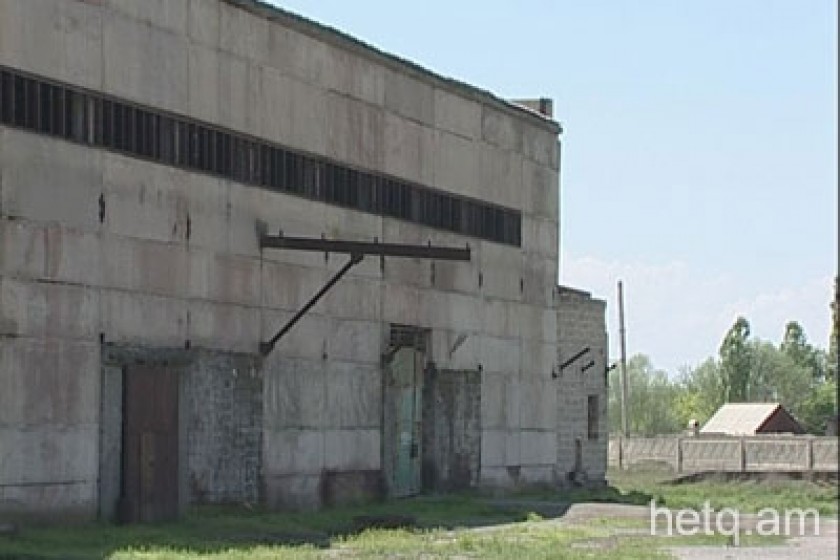
Toxic Mystery: Dealing with Armenia's Unknown Pesticide Legacy
Nelli Danielyan
In the search for chemical pesticide warehouses in Armenia (whose exact number is anybody's guess), I and some colleagues made our way to the Masis train station in Ararat Marz.
We were looking for a company calling itself "Berriutyun" (Fertility). The site once used to house pesticides but now you'll find fertilizer and seeds for planting in the building.
Last year, high quality wheat seed imported from Russia wound up being stored here as well.
As our group approached the building, we noticed the strong odour of chemicals wafting in the air. I just wonder if a recent government delegation to the site didn't experience the same off-putting smell.
The building storing the fertilizer and seed was locked and sturdy. Another small annex, now used for pesticide storage, wasn't locked. In fact, the metal gate used to cover the entrance can't be shut.
The walls of the pesticide warehouse were crumbling and there was no roof to speak of. When it rains, the toxic materials are simply flushed outside, leeching into the surrounding soil.
About one ton of pesticides are thus being stored here, unprotected and vulnerable to the elements.
The pesticide sacks are ripped and the deadly contents are spilling out. Who can tell what toxic soup is being created in this open-air laboratory when it rains.
Myasnik Grigoryan, an agriculture specialist with the company, tried to allay our concerns.
"There are two panel walls separating the pesticides from the seeds and fertilizers. They aren't mixing together."
Other workers at the site told us that a foreign specialist had visited a while back and would only enter the buildings to take samples after putting on a chemical suit for protection.
One worker even joked that the pesticides were so old that they probably had lost their toxic features anyway and that the threat was minimal at best.
He said you could probably eat a spoonful and survive.
During our visit we noticed a group of kids playing nearby. The entrance to the site is open and no one warns them of the danger of getting to close.
The appropriate authorities are aware that pesticides are being stored here and that they should be destroyed in a proper fashion.
The Ministry of Emergency Situations recently conducted a study showing that there are nine such sites in just four of Armenia's eleven provinces. Studies of the remaining seven are now underway.
In these registered sites, there are some 56 tons of expired pesticides. Why are they still being stored?
All these pesticides are holdovers of the Soviet era. The agency responsible, "HayGyughKimia", folded after independence. Some regional offices and property were privatized, along with the pesticides warehouses. The new owners, in turn, sold off anything they could.
But the pesticides remain – abandoned and unsupervised.
No one in government during the past 20 years seems concerned with properly storing these pesticides.
No one really knows the extent of the problem and no one in government has been charged with resolving it.
That is until last year when a special committee, under the jurisdiction of the Ministry of Emergency Situations, was set up.
Hovhannes Yemishyan, who heads the Ministry's Department of Populace and Territorial Defense, told me that they are working with OSCE experts to draft a study paper of the risks and possible resolution options.
Mr. Yemishyan said that the pesticides had to be destroyed, whether the process takes place in Armenia or in some third country.
He confessed that the most preferable option for Armenia would be to collect the pesticides and destroy them at a later date when adequate funding was available.
Armenia's experience in storing toxic waste is not a good one. Just look at what has been going on at the Nubarashen toxic dump site.
Environmentalists and others have been sounding the alarm for years regarding the sorry situation at Nubarashen where deadly wastes have been stored for years awaiting proper elimination.
And these are just the sites we know about.
Specialists in the field say there can be other "private" and long abandoned dump sites we might never know about.
 Videos
Videos Photos
Photos
Write a comment